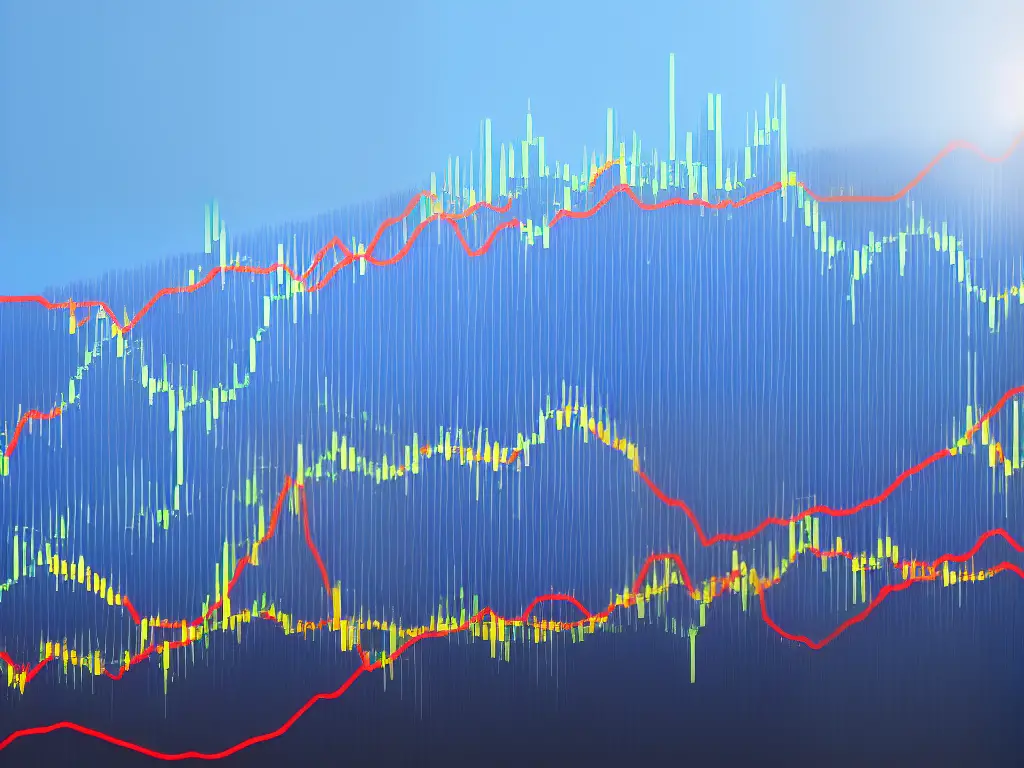Embarking on a journey into the world of stock trading can be both exciting and intimidating. With a plethora of information, strategies, and tools to digest, being well-equipped with the right knowledge is essential to navigating the volatile financial markets and maximizing potential returns. This comprehensive guide aims to provide you with a solid foundation in stock trading, covering key areas such as market analysis, trading strategies, platforms, risk management, psychology, and much more. By the end of this educational journey, you will be better prepared and more confident in your ability to make informed trading decisions, ultimately leading you to greater financial success.
Introduction to Stock Trading
Stock trading is an essential component of the financial market where investors buy and sell shares, also known as "stocks," of public companies. These stocks represent partial ownership in a company, granting the investor the potential for profit as the company's value increases. The stock market is a platform where these transactions occur, with multiple stock exchanges, such as the New York Stock Exchange (NYSE) and NASDAQ, facilitating trading activities. To better understand stock trading, it is important to recognize the fundamentals of the stock market.
A crucial aspect of stock trading is knowing the different types of stocks available in the market. There are two primary categories: common stocks and preferred stocks. Common stocks grant shareholders voting rights in the company and a share of profits through dividends, while preferred stocks have higher dividend payouts and are prioritized during the distribution of a company's assets. Additionally, stocks can be classified as growth stocks and value stocks, with growth stocks having a potential for rapid increases in market value and value stocks being undervalued relative to their financial performance.
As a stock trader, it is essential to familiarize oneself with various stock market terminologies. For example, terms such as market capitalization (the total value of all the company's outstanding shares), earnings per share (EPS, indicating the profitability of a company), and price-to-earnings (P/E) ratio (comparing the company's stock price with EPS) are used to analyze a company's relative value. Other terminologies include 'bid' (the maximum price a potential buyer is willing to pay), 'ask' (the minimum price at which a seller is willing to sell), and 'spread' (the difference between the bid and ask prices), which aid investors in their trading decisions.
When venturing into stock trading, investors should explore various types of trading strategies. Some common strategies include day trading, swing trading, and long-term investing. Day trading involves buying and selling stocks within the day, while swing trading focuses on holding positions for a few days or weeks to capture short-term market movements. Long-term investors, on the other hand, hold onto stocks for an extended period, aiming to benefit from the overall growth of the stock market or specific companies. Each strategy requires different levels of risk tolerance, time commitment, and knowledge of market trends, making it essential for investors to choose the strategy that best suits their individual trading style and goals.
With the advancement of technology, various stock trading platforms have emerged to facilitate seamless transactions for investors. These online brokers offer a wide range of services, including research tools, real-time market data, and educational resources. Selecting a suitable platform is a crucial part of an investor’s trading journey, as factors such as fees, user interface, and customer support can significantly impact their experience and success. Therefore, it’s essential to carry out a thorough comparison of different platforms and align the available features with individual needs and preferences, ensuring an informed decision is made.

Stock Market Analysis
One significant aspect of utilizing a reliable stock trading platform is having access to tools necessary for analyzing the stock market for informed investment decisions. There are two primary methods to assess market trends: fundamental analysis and technical analysis. A well-chosen trading platform should provide the necessary tools and resources for both fundamental and technical analysis, thus allowing investors to make educated trading choices.
Fundamental Analysis: Fundamental analysis focuses on evaluating a company’s financial health, and involves assessing its financial statements, management performance, competition, market position, and industry conditions.
- Earnings per share (EPS): portion of a company’s profit allocated to each outstanding share of common stock and can help gauge its profitability
- Price-to-earnings ratio (P/E): relative value of a stock compared to others in the market, calculated by dividing the current market price of a stock by its EPS
- Return on equity (ROE): measure of how effectively a company’s management utilizes shareholders’ equity to generate profits
- Dividend yield: shows dividend income relative to a stock’s current market price
Technical Analysis: Deals with studying the price movement and trends of stocks through charts and various technical indicators, aiming to predict their future behavior based on historical data.
- Chart patterns: head & shoulders, double tops & bottoms, and triangles – identify a potential trend reversal or continuation
- Technical indicators: moving averages, relative strength index (RSI), and the Moving Average Convergence Divergence (MACD) – help determine entry and exit points, pinpoint potential trend reversals.
Using stock trading platforms can greatly enhance trading through simplified access to company financials, historical price data, and technical indicators. Traders and investors can set customized alerts and notifications to stay updated on the latest news and market movements.
Investors can make profitable decisions, identify the right stocks to invest in, and time their market entries and exits effectively by incorporating both fundamental and technical analysis. This approach can maximize a portfolio’s performance and potential returns.

Trading Strategies
To cater to the diverse needs and preferences of individual investors, stock trading platforms offer various trading strategies such as day trading, swing trading, position trading, and long-term investing. The suitability of each strategy is determined by factors such as one’s financial goals, risk tolerance, and available time for trading.
Day Trading
Day trading involves buying and selling stocks within the same trading day. The main aim of day traders is to profit from short-term price fluctuations by capitalizing on technical analysis and real-time news updates. Day trading is a high-risk, high-reward strategy, as rapid trades can lead to significant gains or losses in a short span of time. However, this style requires full-time attention, making it unsuitable for investors who cannot devote their time to market monitoring.
Swing Trading
Swing trading focuses on capturing gains within several days to weeks. It is usually based on technical analysis, combined with a touch of fundamental research to identify potential price movements. Swing traders attempt to profit from short- to medium-term trends by holding positions longer than a day but shorter than position trading. This strategy is less time-consuming and less risky compared to day trading; however, it may still require frequent monitoring of trades and adjustments.
Position Trading
Position trading is a medium-to-long-term approach that involves holding onto a stock for an extended period, often several weeks to months. Position traders seek to reap the benefits of long-term price movements by analyzing and interpreting macroeconomic factors, industry trends, and company performance. This strategy falls between swing trading and long-term investing, offering moderate risk and reward that can be manageable for most investors.
Long-term Investing
Long-term investing involves purchasing stocks and holding onto them for years or even decades. The goal is to achieve consistent returns through the power of compounding and capital growth. Instead of focusing on short-term fluctuations, long-term investors rely heavily on fundamental analysis to select stocks that are expected to grow in value over time. This low-risk, low-maintenance strategy suits investors who prioritize stability and long-term appreciation.
Each trading strategy offers its unique balance of risk, reward, and commitment, catering to diverse investment objectives and risk profiles. It is essential to evaluate one’s financial goals, resources, and risk tolerance before selecting a suitable trading approach. Furthermore, investors should remain open to refining and adapting their strategies as they gain more experience and insight into the ever-evolving world of stock trading platforms.

Trading Platforms and Tools
These stock trading platforms have transformed significantly in recent years, providing investors with an assortment of features and functionalities aimed at enhancing their trading experience. Prominent platforms such as E-Trade, TD Ameritrade, and Robinhood offer various tools and resources that can prove invaluable as you navigate the intricate world of stock trading, allowing you to better achieve your investment goals and align with your risk appetite.
E-Trade is a comprehensive online brokerage platform that allows users to trade stocks, options, futures, ETFs, and mutual funds. It offers essential tools such as advanced charting, market information, and real-time data to give you an edge on market analysis. E-Trade also provides a range of educational resources and market insights, which can help investors make informed decisions about their trades. Additionally, the platform offers customizable asset screeners and alerts you can set up to monitor stocks and other investments easily.
TD Ameritrade, another popular platform with a vast selection of investment products, provides a vast range of customization options for charts, news, and alerts. The platform also boasts a collection of research tools, including client sentiment data, real-time streaming quotes, and access to third-party analyses. Besides, TD Ameritrade has a heavily customizable trading platform called thinkorswim, which offers advanced screening tools, technical analysis tools, and backtesting capabilities that let you test your trading strategies based on historical data.
Robinhood, a relatively newer platform known for its commission-free trades, focuses on providing a user-friendly interface, which is especially attractive to beginners. Alongside traditional stock trading, Robinhood also allows for trading cryptocurrency and fractional shares. The platform has a few research tools available, such as real-time market data, personalized news feed, and insightful price charts. Moreover, Robinhood offers Robinhood Gold, a subscription service that features additional tools like Level II market data and larger instant deposits.
When choosing a stock trading platform, investors should carefully assess factors such as fees, investment options, user experience, and research tools. Platforms such as Charles Schwab, Fidelity, and Interactive Brokers offer unique features and cater to specific market niches, making them worthy of consideration. Ultimately, the best platform for an individual will depend on their personal preferences, investing goals, and trading strategies.

Risk Management
Once a suitable platform has been selected, traders must prioritize risk management within their stock trading and investing activities. Effective risk management strategies are essential in safeguarding one’s capital, maximizing returns, and minimizing the possibility of substantial losses. A well-rounded approach to risk management can significantly improve the overall success and sustainability of a trader’s portfolio.
One widely used technique is position sizing, which pertains to the proportion of an investor’s overall portfolio allocated to a particular trade. By adequately adjusting position sizes, investors can reduce the potential damage of a single position, thereby mitigating overall risk. Some investors choose to size their positions based on a fixed percentage of their total portfolio or the volatility of the underlying asset.
Another essential component of risk management in stock trading is the use of stop-loss orders. Stop-loss orders act as automated commands to close a trade once the price of a security reaches a predetermined level, thereby locking in profits and limiting losses. By setting a stop-loss order, traders can predetermine their maximum acceptable losses for each trade and avoid the risks associated with emotion-driven decisions. Different types of stop-loss orders, such as trailing stops, can offer additional risk-management benefits by allowing profits to run while still locking in returns if the market suddenly reverses.
Diversification is a key principle of risk management, which aims to spread investments across a wide range of assets, sectors, and markets. By diversifying their portfolio, investors can reduce unsystematic risk or the risk associated with fluctuations in individual stocks or industries. By holding a well-diversified portfolio, investors can reduce the potential impact of a single underperforming asset and enhance overall portfolio performance.
Developing a solid risk management plan is critical to long-term success in stock trading platforms. Traders must first assess their risk tolerance and financial goals to determine the appropriate level of risk for their portfolio. Once these parameters have been established, traders can implement various risk management techniques, such as position sizing, stop-loss orders, and diversification, to protect their capital and maximize returns. Regular monitoring and adjusting of the risk management plan is essential, as market conditions and personal circumstances can change over time.
Risk management tools offered by stock trading platforms can be extremely valuable for investors looking to implement effective risk management strategies and achieve investment success. Many trading platforms provide features such as automated stop-loss orders, customizable position sizing options, and tools for analyzing and monitoring the diversification of your portfolio. By leveraging the capabilities of these tools, traders can gain better control over the risks associated with stock trading and improve their overall investment strategy.

Psychology of Trading
In addition to effective risk management, trading psychology plays a critical role in an individual’s success in the stock market. It is essential to understand and manage one’s emotions, discipline, and mindset to maximize gains and minimize losses on stock trading platforms. By harnessing both the power of risk management tools and maintaining a strong trading psychology, investors can create a seamless, well-rounded approach to stock trading that will help propel them toward their financial goals.
A successful trading mindset involves developing rational decision-making abilities that are not influenced by emotions, adhering to a specific trading plan or strategy, and having the discipline to follow through with it. Trading psychology also involves overcoming some common psychological pitfalls, like fear of losing and greed, which can significantly impact an individual’s trading behavior.
Overcoming the Fear of Losing
One common psychological pitfall that traders often face is fear, primarily due to the fear of losing. The fear of losing may lead to emotional decisions that can result in prematurely exiting trades or avoiding trades altogether, even if they align with a set trading strategy. To overcome the fear of losing, traders must accept that losses are a part of trading and focus on risk management, which includes setting appropriate stop-loss levels and position sizing. This approach can help traders maintain a clear mind when entering or exiting trades, allowing them to make rational decisions free from emotional influences.
Curbing Greed
Greed is another prevalent psychological aspect that can negatively impact a trader’s performance. Greed arises when traders become overly confident and focused on making profits, disregarding established risk management principles. They may take on excessively high risk in hopes of earning more profits, leading to trading losses. It is essential for traders to maintain discipline and stick to their trading plan, even when experiencing a winning streak. Setting realistic profit targets and using profit-taking strategies can help curb greed and maintain focus on long-term success.
Fostering a Growth-Oriented Mindset
A successful trading mindset also involves having a growth-oriented perspective in the stock market. Learning from past mistakes and continuously seeking knowledge about various trading strategies, technical analysis, and market trends is vital for long-term success. Keeping a trading journal can help traders recognize and understand the patterns in their trading behavior and identify areas for improvement. Being receptive to feedback and criticism from others, as well as engaging in self-reflection, are essential steps in fostering a growth-oriented mindset.
The Power of Patience in Trading
Developing patience is crucial in the world of stock trading. Patience enables traders to wait for the right opportunities and execute their trades according to their defined strategy, without giving in to external pressures or emotional biases. Inexperienced traders often tend to make hasty decisions out of impatience, leading to poor trade execution and undesirable results. Cultivating patience requires practicing mindfulness and focusing on the process rather than the outcome, thereby fostering a more disciplined and methodical approach to trading on stock platforms.

Stock Market News and Events
One crucial aspect of practicing patience and methodical approach in trading is analyzing earnings reports. Earnings reports provide a snapshot of a company’s financial performance for a specific time period, usually quarterly or annually, and include revenues, net income, earnings per share, and other key financial metrics. These insights on the company’s financial health are essential for traders, as better-than-expected results can often lead to a surge in stock prices, whereas disappointing reports may cause a decline. By patiently waiting for and analyzing these reports, traders can make more informed decisions when trading stocks.
M&A events can lead to shifts in market share, operational efficiencies, and a potential increase in stock prices for the acquiring company. The announcement of a new acquisition typically results in increased market interest and volume, as traders speculate on the synergies and long-term impact on the company’s overall valuation. Stock trading platforms usually offer detailed information about recent M&A deals and how they might influence certain stocks, enabling traders to react accordingly.
Market trends and global events also have a role in impacting stock prices, as they can affect overall investor sentiment and trading behavior. Broad economic indicators such as employment rates, inflation levels, and gross domestic product (GDP) growth can influence individual stock prices as well as entire markets. Stock trading platforms often provide real-time news feeds and analysis tools, enabling traders to closely monitor global events and gain insights into their potential impact on stock prices. Traders who capitalize on these insights and make timely investment decisions based on market trends can profit from short-term price fluctuations.
In addition to considering financial and global news, other tools can help traders analyze the potential impact of certain events on stock prices. Technical analysis, for instance, involves the study of historical price patterns to anticipate future price movements. Moreover, platforms offer various customizable charting tools enabling traders to identify trends, price patterns, and potential entry and exit points. Considering these analytical tools and combining them with updated information on market events creates a greater potential for traders to make informed decisions and succeed in their trading endeavors.
One key feature of stock trading platforms is the integration of economic calendars, which assist traders in staying informed about crucial economic events and announcements. These calendars typically offer insights into vital economic indicators such as central bank interest rate decisions, job reports, and consumer confidence indexes. Since these factors can impact investor confidence and, consequently, stock prices, traders can use this information to predict price movements and plan their trades accordingly. Moreover, various platforms often supply traders with timely alerts and notifications, ensuring they never miss a critical market event while making trading decisions.

Trading Systems and Automation
Following this, the increasing popularity of trading systems and automation in stock trading platforms provides significant advantages to traders looking to broaden their knowledge. These advantages include the ability to systematically execute trades based on predetermined rules and strategies. Algorithmic trading, for instance, employs sophisticated algorithms and mathematical models to identify optimal entry and exit points for trades. By using computer programs to perform trades rapidly and efficiently, traders can minimize human error and emotional bias in their investment decisions, thus enhancing their overall trading experience.
There are several benefits to utilizing automated trading strategies in stock trading platforms. First, automated trading systems can manage multiple accounts and diverse trading strategies simultaneously, allowing traders to diversify their investments and mitigate risk. This enables them to allocate capital across a wider array of opportunities and seize market opportunities that they may not have been able to identify or act upon manually. Second, automated trading systems can execute trades quickly and precisely, reducing the risk of slippage and improving overall trading performance. By rapidly generating and executing orders based on a set of predetermined rules, these systems allow traders to enter or exit positions without the need for constant monitoring and manual intervention.
However, there are also drawbacks to using automated trading systems in stock trading platforms. One concern is that these systems are only as effective as the strategies and algorithms they are based on. If the underlying trading strategy is flawed or outdated, the automated system may generate poor results or even produce significant losses. Additionally, automated trading systems can be vulnerable to technical issues, such as server downtime or connectivity problems, which may hinder their ability to execute trades effectively.
To develop and implement your own automated trading system, it is important to first identify a robust and sound trading strategy. This involves conducting thorough research, backtesting, and refining your approach to ensure that it is capable of generating consistent, positive returns in various market conditions. Once your strategy has been fine-tuned, you can then begin the process of developing algorithms, coding them into a compatible programming language, and integrating them into your preferred stock trading platform. Many platforms offer application programming interfaces (APIs) that allow users to build and deploy custom algorithms directly within the platform, streamlining the process of implementing automated trading systems.
To ensure the continued efficacy and performance of your automated trading system, it is crucial to monitor and maintain it. This involves regularly reviewing the system’s performance statistics and making any necessary adjustments to your algorithms or trading strategies. By staying abreast of market trends and technological advancements, traders can ensure that their automated trading systems remain effective and competitive in the fast-paced world of stock trading platforms.

Trading Ethics and Regulations
Along with maintaining an efficient automated trading system, it is equally important to be aware of trading ethics and regulations that contribute to the integrity and fairness of the stock market. Adhering to insider trading laws that prevent individuals with access to non-public, price-sensitive information from using it to their advantage is one vital aspect of ethical trading practices. Confidential information, such as corporate earnings reports, mergers, and acquisitions, may have a significant impact on a company’s stock price. Traders who act upon such information not only violate the law but also undermine the core principles of fairness, transparency, and trust in the financial industry.
Financial industry regulations are another critical component of ethical stock trading. Regulatory authorities such as the Securities and Exchange Commission (SEC) in the United States, the Financial Conduct Authority (FCA) in the United Kingdom, and the European Securities and Markets Authority (ESMA) in the European Union enforce strict standards to protect investors and maintain market integrity. These regulatory bodies oversee various aspects of stock trading, including broker registration, financial reporting by publicly traded companies, and disclosure requirements. By adhering to these regulations, traders avoid manipulative practices and maintain the overall stability of the market.
In addition to following insider trading laws and financial regulations, ethical traders also engage in responsible trading activities. This includes avoiding practices that may create artificial supply or demand for stocks, such as wash trading, spoofing, or pump-and-dump schemes. These deceptive actions not only violate regulations but also erode trust among market participants and may lead to significant losses for unsuspecting investors. By engaging in responsible trading, individuals and institutions contribute to a more stable, transparent, and equitable market environment.
Stock trading platforms can serve as valuable tools for traders to practice ethical and responsible trading. Reliable platforms provide access to accurate and timely market data, offer robust risk management tools, and enforce strict security measures to protect user information. Additionally, many platforms include educational resources that assist traders in understanding and adhering to applicable trading ethics, regulations, and best practices. By promoting ethical trading, these platforms contribute to maintaining trust between market participants and help ensure the long-term sustainability of the stock market.
In conclusion, understanding the ethical practices and regulatory obligations associated with stock trading is essential for anyone interested in participating in the stock market. Adherence to insider trading laws, financial industry regulations, and responsible trading practices contributes to a fair, transparent, and stable market environment that benefits everyone. With the help of reliable stock trading platforms, traders can access the knowledge and tools needed to maintain high ethical standards and compliance with all relevant regulations, ensuring they can confidently navigate the complex world of stock trading.

Stock trading is a complex and dynamic field, requiring an ongoing commitment to learning and adaptation. By gaining a thorough understanding of the fundamentals, acquiring practical skills, and embracing the psychological aspects of trading, you can maximize your chances of success in this exciting and challenging world. Remember that consistent growth, risk management, and disciplined decision-making are key elements in achieving long-term profitability. As you continue to hone your skills and expand your knowledge, always approach the markets with an open mind and a diligent mindset, ready to embrace the ever-evolving world of stock trading.

